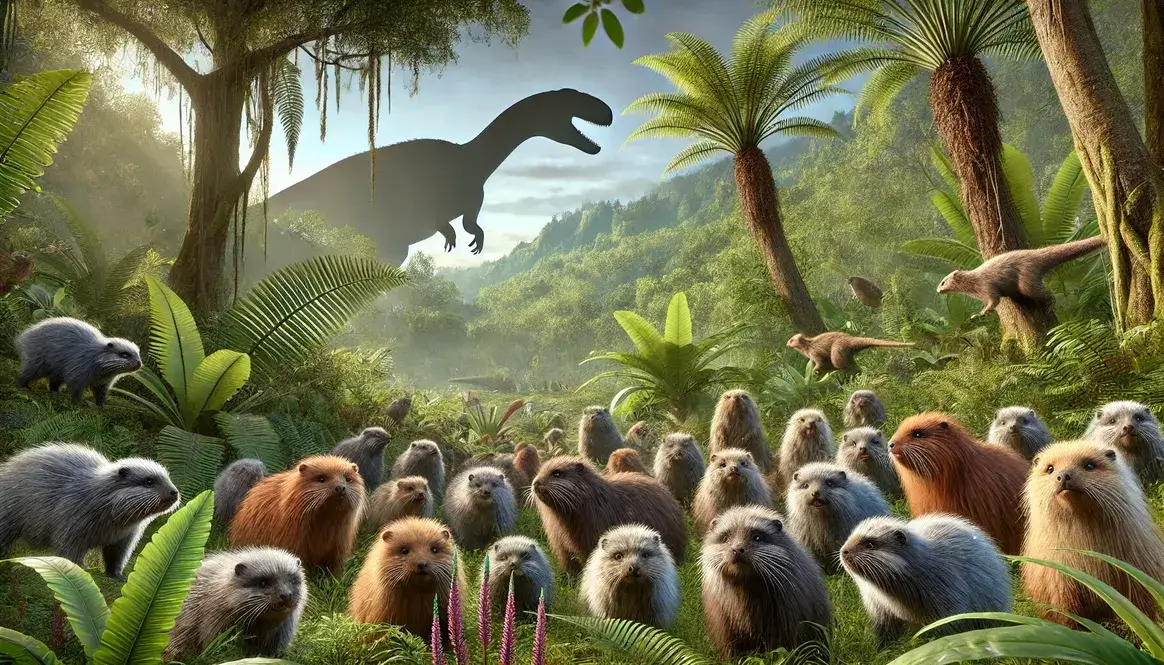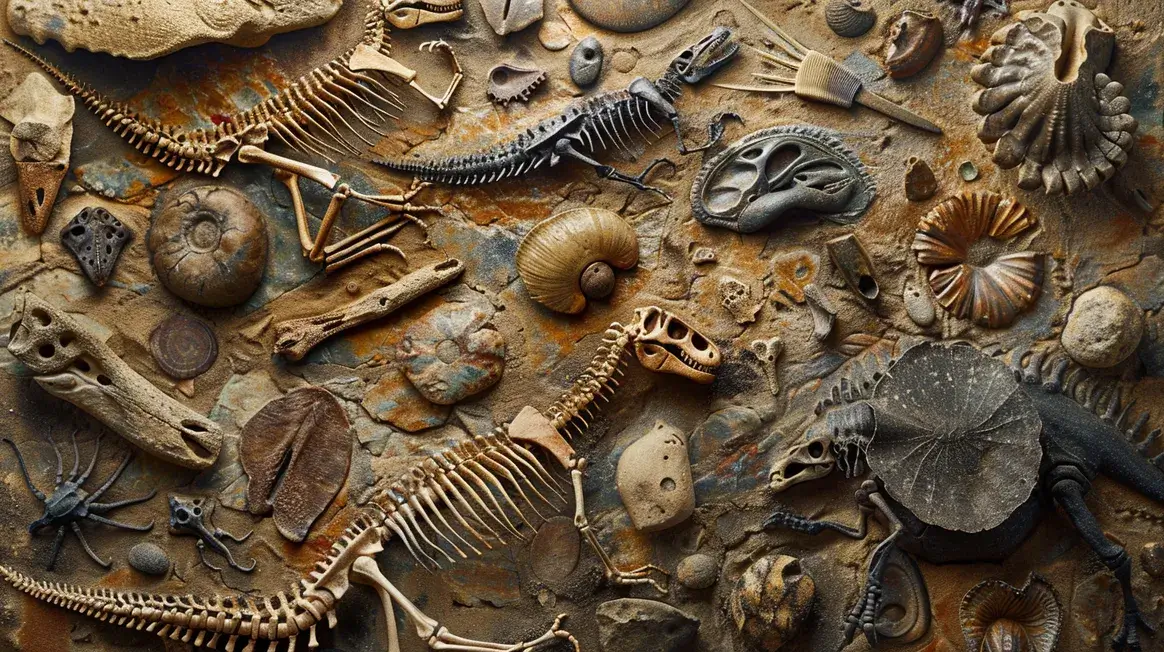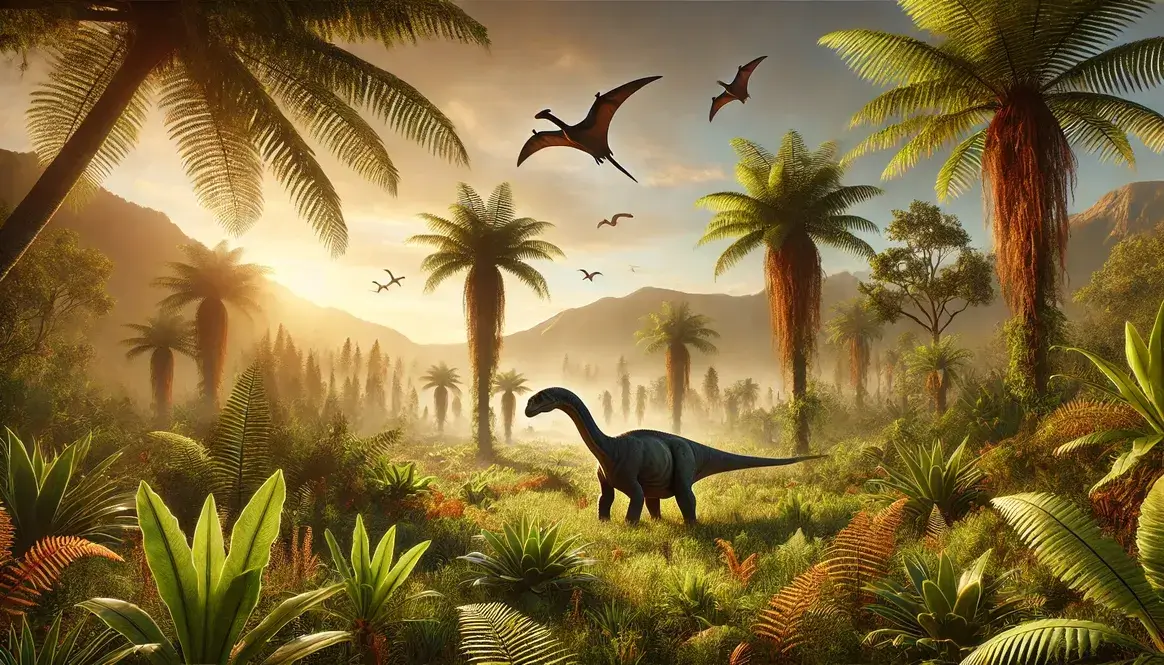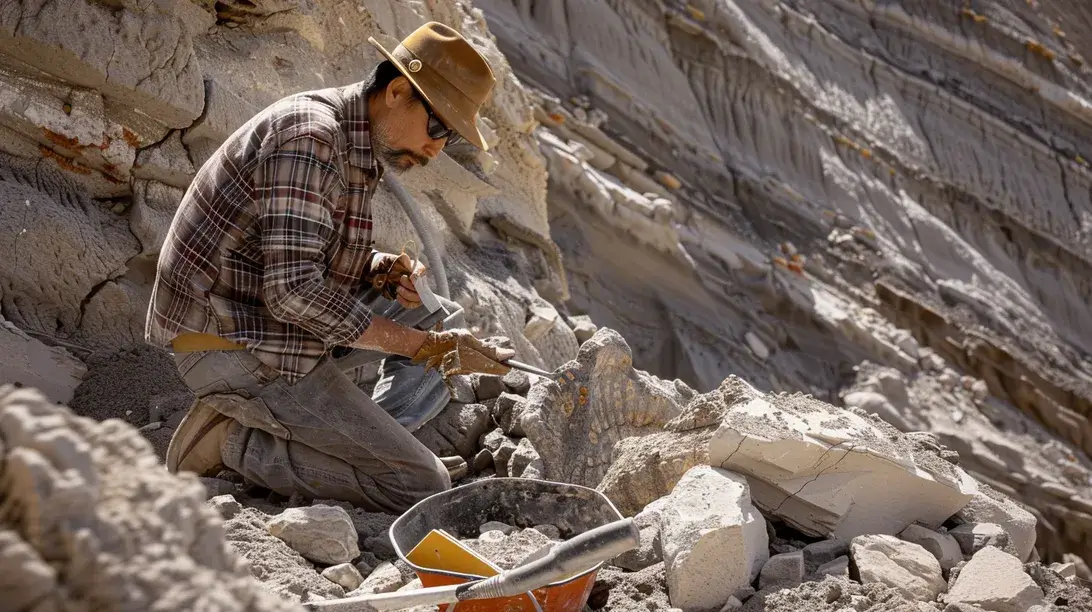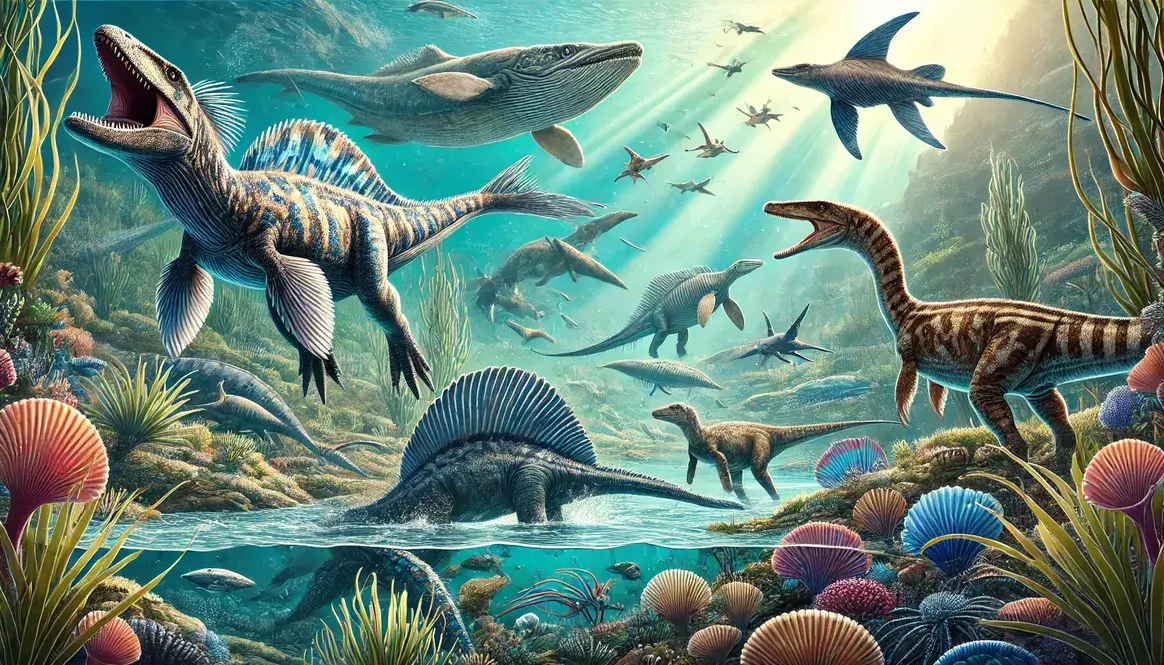The Jurassic period, spanning from 201 to 145 million years ago, was a time of incredible change and diversity. This era set the stage for one of the most fascinating chapters in Earth’s history: the rise of early mammals Jurassic.
The Jurassic world was a place of wonder and transformation. Dinosaurs ruled the land, but beneath their feet, a revolution was brewing. This was the era when early mammals in the Jurassic began their journey towards becoming the diverse group we know today.
During this time, the supercontinent Pangaea was breaking apart, creating new environments and opportunities for life to thrive. The climate was generally warm and humid, with lush forests and ferns covering much of the land. These conditions set the stage for the evolution of early mammals, providing them with abundant food sources and shelter from larger predators.
Early Mammals Jurassic: The First Furry Pioneers
The early mammals of the Jurassic were small, often no bigger than mice or shrews. But don’t let their size fool you – these tiny creatures were the ancestors of all mammals alive today, including us!
These early mammals had several key characteristics that set them apart from their reptilian relatives:
- Fur: Unlike scaly reptiles, early mammals had hair or fur covering their bodies.
- Warm-bloodedness: They could regulate their body temperature internally.
- Live birth: Many early mammals gave birth to live young rather than laying eggs.
- Complex teeth: They had specialized teeth for different functions, unlike the simple, uniform teeth of reptiles.
Early Jurassic: Small but Diverse
The Early Jurassic saw the emergence of diverse mammal groups, each carving out their own niche in the shadow of dinosaurs. These early mammals were small but remarkably varied in their adaptations.
Morganucodontids: The Ancestral Insectivores
Morganucodontids were some of the earliest true mammals. These small, shrew-like creatures were insectivores, using their sharp teeth to crunch through the exoskeletons of insects.
Key features of Morganucodontids:
| Feature | Description |
|---|---|
| Size | About 10-12 cm long |
| Diet | Primarily insects |
| Teeth | Sharp, with complex cusps for crushing insect exoskeletons |
| Habitat | Likely forest floors and underbrush |
One of the most significant fossil discoveries of Morganucodontids was made in South Wales, UK. These fossils, dating back to the Early Jurassic, provide crucial insights into the early evolution of mammalian traits.
Kuehneotheriids: Early Divergence in Mammal Evolution
Kuehneotheriids represent an important branch in early mammal evolution. These small creatures showed a mix of reptilian and mammalian features, making them a fascinating subject for paleontologists.
Unique characteristics of Kuehneotheriids:
- Teeth with a reversed triangle pattern, a stepping stone towards more complex mammalian teeth
- Likely nocturnal, with larger eye sockets suggesting improved night vision
- Probably insectivores, like their Morganucodontid cousins
The significance of Kuehneotheriids lies in their position in the mammalian family tree. They represent an early split in mammal evolution, showcasing the diversity that was already present in the Early Jurassic.
Middle Jurassic: Expanding Niches
As the Jurassic progressed, early mammals began to diversify and explore new ecological niches. This period saw the emergence of more specialized mammal groups, each adapting to unique environments.
Docodonts: The Semi-Aquatic Specialists
Docodonts were a group of early mammals that took a surprising turn – towards the water! This adaptation opened up new opportunities for survival and diversification.
Adaptations for aquatic life:
- Flattened tail for swimming
- Webbed feet for propulsion
- Dense bones to help with buoyancy control
Fossil evidence of Docodonts has been found in what were once lake and river environments. The most famous example is Castorocauda lutrasimilis, discovered in China. This beaver-like creature was about 17 inches long, making it one of the largest mammals of its time.
Australosphenidans: Southern Hemisphere Pioneers
While many early mammal fossils have been found in the Northern Hemisphere, the Australosphenidans tell a different story. These creatures were some of the first mammals to evolve in the Southern Hemisphere.
Distinctive features of Australosphenidans:
- Unique tooth structure with a backwards-facing cusp
- Possibly monotreme-like, laying eggs instead of giving live birth
- Adapted to the unique environments of the southern continents
The discovery of Australosphenidans in places like South America and Madagascar has greatly expanded our understanding of early mammal evolution and distribution. It shows that mammals were not confined to one part of the world but were spreading and diversifying across the globe during the Jurassic period.
Late Jurassic: Diversification and Specialization
The Late Jurassic period witnessed a remarkable explosion of mammalian diversity. As dinosaurs continued to dominate the larger ecological niches, early mammals found success through specialization, evolving unique adaptations to fill various roles in the Jurassic ecosystem.
Multituberculates: The Successful Herbivores
Multituberculates were among the most successful groups of early mammals, thriving for over 100 million years. These small, rodent-like creatures were named for their unique dental adaptations, which included:
- Multiple rows of small, cusped teeth (hence “multituberculate”)
- Specialized premolars for grinding plant material
- Self-sharpening incisors for gnawing
These dental innovations allowed multituberculates to exploit plant food sources that were inaccessible to other mammals of the time. Their long-term evolutionary success is evident in their survival well past the Jurassic, persisting until about 35 million years ago.
Eutriconodonts: The First Mammalian Predators
As the Jurassic progressed, some early mammals evolved to become predators. The eutriconodonts were at the forefront of this carnivorous adaptation, developing sharp, blade-like teeth for slicing meat and powerful jaw muscles for a strong bite. Their enhanced sense of smell also aided in tracking prey.
Eutriconodonts ranged in size from small shrew-like creatures to animals the size of small dogs. This size range allowed them to occupy various ecological roles, from insectivores to active predators of small vertebrates.
Symmetrodonts: The Mysterious Insectivores
Symmetrodonts represent a lesser-known group of Jurassic mammals. Their name comes from their distinctive molar structure, which was symmetrical and triangular. This unique tooth arrangement, with three main cusps arranged in a triangle, was efficient for puncturing and crushing insect exoskeletons.
While less is known about symmetrodonts compared to other Jurassic mammal groups, fossils suggest they were widespread, found in both the Northern and Southern hemispheres. Their specialized teeth indicate they likely occupied an insectivorous niche, perhaps active during the night to avoid competition with reptiles.
Anatomical Innovations: Keys to Mammalian Success
The success of early mammals in the Jurassic can be attributed to several key anatomical innovations. These adaptations set the stage for the eventual dominance of mammals in later eras.
Jaw and Ear Evolution
One of the most crucial developments in mammalian evolution was the transition of certain jaw bones into ear bones. This process began in mammal-like reptiles and was completed in early mammals. The reptilian jaw bones (articular and quadrate) became the malleus and incus in the mammalian middle ear.
| Reptilian Structure | Mammalian Evolution |
|---|---|
| Articular bone | Became malleus |
| Quadrate bone | Became incus |
This transition allowed for more efficient chewing and improved hearing, giving early mammals an edge in detecting both prey and predators.
Fur and Warm-Bloodedness
While direct evidence of fur in Jurassic mammals is rare due to the poor preservation of soft tissues, several fossil findings suggest its presence. Fossilized hair follicles and the presence of whisker follicles indicate facial hair in some specimens.
The development of fur went hand-in-hand with the evolution of endothermy, or warm-bloodedness. This allowed early mammals to maintain a constant body temperature, enabling them to remain active in cooler conditions and during the night.
Specialized Teeth and Diverse Diets
The evolution of complex tooth structures was a game-changer for early mammals. Unlike the simple, uniform teeth of reptiles, mammalian teeth became highly specialized. This included the development of different tooth types (incisors, canines, premolars, molars) and precise occlusion (fitting together) of upper and lower teeth.
These dental adaptations allowed early mammals to process a wide variety of foods efficiently. From the grinding molars of herbivores to the sharp canines of carnivores, specialized teeth opened up new dietary opportunities and ecological niches.
Ecological Roles: Living in a Dinosaur-Dominated World
In a world where dinosaurs reigned supreme, early mammals had to adapt to survive. They carved out unique ecological niches that allowed them to thrive alongside their larger reptilian counterparts.
Nocturnal Adaptations
Many Jurassic mammals likely evolved nocturnal habits to avoid competition and predation from dinosaurs. This nighttime lifestyle brought about several adaptations:
- Enlarged eye sockets for improved night vision
- Enhanced sense of smell for navigating in the dark
- Sensitive whiskers for feeling their way through nocturnal environments
Exploiting Small-Body Niches
The small size of Jurassic mammals, once seen as a limitation, became their greatest advantage. Their diminutive stature allowed them to:
- Access food sources too small for dinosaurs
- Hide in burrows and crevices for protection
- Survive on less food, crucial during times of scarcity
Interactions with Other Jurassic Fauna
While avoiding direct competition with dinosaurs, Jurassic mammals interacted with various other fauna:
- Insects: Many early mammals were insectivores, playing a crucial role in controlling insect populations.
- Plants: Some mammals, like multituberculates, began to exploit plant food sources, potentially aiding in seed dispersal.
- Small reptiles: Mammals likely competed with and preyed upon small lizards and other reptiles.
Key Fossil Discoveries: Windows into Jurassic Mammal Life
Fossil discoveries have been crucial in piecing together the story of Jurassic mammals. Some notable sites and specimens have provided invaluable insights into these ancient creatures.
Liaoning, China: A Fossil Treasure Trove
The Liaoning Province in northeastern China has yielded some of the most spectacular Jurassic mammal fossils. The fine-grained lake sediments in this region have preserved delicate structures, including fur and soft tissues.
Key discoveries from Liaoning include:
- Castorocauda lutrasimilis: A semi-aquatic mammal with beaver-like adaptations
- Volaticotherium antiquus: One of the earliest known gliding mammals
Other Significant Fossil Sites
| Site | Location | Notable Discoveries |
|---|---|---|
| Guimarota Mine | Portugal | Diverse mammal fauna, including multituberculates |
| Kayenta Formation | Arizona, USA | Early mammal fossils, including Dinnetherium |
| Kirtlington Quarry | England | Rich microvertebrate fauna, including symmetrodonts |
These fossils have revealed crucial information about Jurassic mammal anatomy, diversity, and ecological roles, painting a vivid picture of life in the shadow of dinosaurs.
Legacy of Jurassic Mammals: Setting the Stage for Mammalian Dominance
The Jurassic period was a critical time in mammalian evolution, laying the groundwork for their eventual dominance. The adaptations and innovations that emerged during this time would prove crucial for their long-term success.
Evolutionary Innovations Leading to Later Success
Several key innovations that appeared or were refined in Jurassic mammals set the stage for their later diversification:
- Improved hearing: The evolution of the mammalian middle ear enhanced sound perception, a crucial advantage for nocturnal animals.
- Efficient chewing: Complex teeth and jaw structures allowed for more effective food processing.
- Endothermy: Warm-bloodedness enabled mammals to remain active in various environmental conditions.
- Lactation: While difficult to prove in fossils, the ability to produce milk likely evolved during this time, providing a significant advantage in offspring care.
Surviving the K-Pg Extinction Event
The adaptations acquired by mammals during the Jurassic period played a crucial role in their survival through the Cretaceous-Paleogene (K-Pg) extinction event. Their small size, diverse diets, and ability to live in varied habitats allowed many mammal lineages to survive when the dinosaurs perished.
In the aftermath of the extinction, mammals were well-positioned to diversify and fill the ecological niches left vacant by the dinosaurs. The groundwork laid during the Jurassic period enabled mammals to evolve into the diverse array of species we see today, from tiny shrews to enormous whales.
The story of Jurassic mammals is one of resilience, adaptation, and evolutionary innovation. These small, often overlooked creatures of the dinosaur age were the ancestors of all mammals alive today, including humans. Their journey through the Jurassic set the stage for the Age of Mammals that was to come, millions of years in the future.

